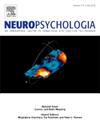The effects of targeted reactivation on memories cued once or multiple times during a nap
IF 2
3区 心理学
Q3 BEHAVIORAL SCIENCES
引用次数: 0
Abstract
During sleep, memory traces are reactivated and consolidated into long-term memory. Discrete reactivation events involve coordinated activity between the hippocampus and neocortex. In this study, we examined whether the number of reactivation events directly translates to benefits to memory. To test this, we used targeted memory reactivation, a technique to selectively bias reactivation for certain memories by presenting non-invasive sensory cues. Participants (N = 31) completed a computerized object-location task, in which 60 images were presented along with related sounds. During non-REM sleep, 40 of these sounds were presented either once (20 sounds) or five times (20 sounds) in an interleaved fashion. Participants then completed another task designed to interfere with the previously encoded spatial memories, before being tested again on the initial object positions. The results showed no significant performance benefits for cued objects regardless of the number of sound presentations. This may be due to the interference task, which substantially increased error rates. Nevertheless, we found differences between the electrophysiological profiles linked with multiple vs. single sound presentation during sleep. Sigma spectral power predicted improvements in performance for the objects cued five times, but not for those cued once. For sounds presented once, benefits from sleep were predicted by post-sound power in the delta band. Although our results did not fully resolve the question of the relationship between the number of reactivation events and subsequent memory benefits, they inform future research using targeted memory reactivation to selectively bias memory during sleep.
定向再激活对记忆的影响在小睡期间会出现一次或多次提示。
在睡眠期间,记忆痕迹被重新激活并巩固为长期记忆。离散的再激活事件涉及海马体和新皮层之间的协调活动。在这项研究中,我们研究了再激活事件的数量是否直接转化为对记忆的好处。为了验证这一点,我们使用了定向记忆再激活技术,这是一种通过呈现非侵入性感官线索来选择性地对某些记忆进行偏置再激活的技术。参与者(N = 31)完成了一项计算机化的物体定位任务,其中60幅图像与相关声音一起呈现。在非快速眼动睡眠期间,这些声音中的40个以交错的方式播放一次(20个声音)或五次(20个声音)。然后,参与者完成了另一项旨在干扰先前编码的空间记忆的任务,然后再次对初始物体位置进行测试。结果表明,无论声音呈现的数量如何,提示对象的性能都没有显著的提高。这可能是由于干扰任务,这大大增加了错误率。尽管如此,我们还是发现了睡眠中与多重声音呈现和单一声音呈现相关的电生理特征之间的差异。西格玛光谱功率预测了被提示五次的物体性能的提高,但没有被提示一次的物体。对于只出现一次的声音,睡眠的好处是通过δ波段的声后功率来预测的。虽然我们的研究结果并没有完全解决再激活事件的数量与随后的记忆益处之间的关系问题,但它们为未来的研究提供了信息,这些研究使用有针对性的记忆再激活来选择性地在睡眠中偏向记忆。
本文章由计算机程序翻译,如有差异,请以英文原文为准。
求助全文
约1分钟内获得全文
求助全文
来源期刊

Neuropsychologia
医学-行为科学
CiteScore
5.10
自引率
3.80%
发文量
228
审稿时长
4 months
期刊介绍:
Neuropsychologia is an international interdisciplinary journal devoted to experimental and theoretical contributions that advance understanding of human cognition and behavior from a neuroscience perspective. The journal will consider for publication studies that link brain function with cognitive processes, including attention and awareness, action and motor control, executive functions and cognitive control, memory, language, and emotion and social cognition.
 求助内容:
求助内容: 应助结果提醒方式:
应助结果提醒方式:


